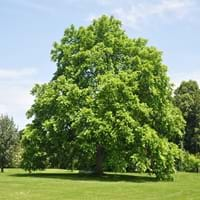Life Span
Annual and Perennial
Biennial
Type
Bulb or Corm or Tuber
Tree
Origin
Latin America and the Caribbean, Central America, Micronesia
North America, United States, Northeastern United States, Mid-Atlantic United States, North-Central United States, Central United States, Canada
Types
Hannah Yams, Japanese Sweet Potatoes
Not Available
Number of Varieties
Not Available
Habitat
Cold Regions, Tropical regions
Anthropogenic, Floodplains, Forests
USDA Hardiness Zone
11-12
3-9
Sunset Zone
21,22
1a, 1b, 2a, 2b, 3a, 3b, 4, 5, 6, 7, 8, 9, 14, 15, 16, 17
Habit
Vining/Climbing
Oval or Rounded
Minimum Width
Not Available
Flower Color
Not Available
Yellow green
Flower Color Modifier
Bicolor
Bicolor
Fruit Color
Not Available
Green, Brown
Leaf Color in Spring
Green, Purple, Light Green, Chartreuse, Bronze
Light Green
Leaf Color in Summer
Light Green
Green, Dark Green
Leaf Color in Fall
Several shades of Green
Yellow, Gold
Leaf Color in Winter
Light Green
Not Available
Leaf Shape
Heart-shaped
Pinnate
Plant Season
Spring, Summer, Fall, Winter
Spring, Summer, Fall
Sunlight
Full Sun, Partial Sun
Full Sun
Growth Rate
Very Fast
Slow
Type of Soil
Clay, Loam, Sand
Clay, Loam
The pH of Soil
Acidic, Neutral, Alkaline
Acidic, Neutral, Alkaline
Soil Drainage
Well drained
Well drained
Bloom Time
Late Fall, Early Winter, Winter
Late Spring, Early Summer
Tolerances
Drought
Not Available
Where to Plant?
Ground, Pot
Ground
How to Plant?
Stem Cutting, Tuber propagation
Seedlings
Plant Maintenance
Medium
Medium
Watering Requirements
Average Water Needs, Needs a lot of water initially
Average Water Needs, Do Not over Water, Requires regular watering
In Summer
Lots of watering
Lots of watering
In Spring
Moderate
Moderate
In Winter
Average Water
Average Water
Soil pH
Acidic, Neutral, Alkaline
Acidic, Neutral, Alkaline
Soil Type
Clay, Loam, Sand
Clay, Loam
Soil Drainage Capacity
Well drained
Well drained
Sun Exposure
Full Sun, Partial Sun
Full Sun
Pruning
Remove damaged leaves, Remove dead branches, Remove dead leaves
Remove damaged leaves, Remove dead branches, Remove dead leaves
Fertilizers
All-Purpose Liquid Fertilizer
All-Purpose Liquid Fertilizer
Pests and Diseases
Aphids, Beetles, Leafminers, Red blotch
Red blotch
Plant Tolerance
Drought
Not Available
Flowers
Showy
Insignificant
Flower Petal Number
Single
Not Available
Fragrant Leaf
No
Not Available
Fragrant Bark/Stem
No
Not Available
Foliage Texture
Coarse
Coarse
Foliage Sheen
Matte
Matte
Attracts
Aphids, Beetles, Mites, white worms
Birds, Squirrels
Allergy
Abdominal pain, Skin rash, Swelling, Vomiting
Gastric, Pollen
Aesthetic Uses
Not Used For Aesthetic Purpose
Not Used For Aesthetic Purpose
Beauty Benefits
Not Available
Good for skin
Environmental Uses
Air purification
Air purification, Shadow Tree
Medicinal Uses
Potassium, ß-carotene, Vitamin C
Dysentry, Intestinal irritations, Small pox, Stomach pain
Part of Plant Used
Leaves, Root, Shoots
Sap, Seeds
Other Uses
Used As Food, Used for its medicinal properties
Application in Furniture, Decorative veneers, flooring, paneling, Herbicide
Used As Indoor Plant
Yes
No
Used As Outdoor Plant
Yes
Yes
Garden Design
Container, Edible, Groundcover, Hanging Basket, Herb / Vegetable, Mixed Border, Vine
Edible, Shade Trees
Botanical Name
IPOMOEA batatas
JUGLANS cinerea
Common Name
Sweet Potato, Sweet Potato Vine
Butternut
In Hindi
शकरकंद
Butternut Tree
In German
Süßkartoffel
Butternut Baum
In French
Patate douce
noyer cendré
In Spanish
Batata
árbol de nogal
In Greek
Γλυκοπατάτα
Butternut Δέντρο
In Portuguese
Batata doce
Árvore Butternut
In Polish
Słodki ziemniak
butternut Drzewo
In Latin
Dulcis SOLANUM TUBEROSUM
Butternut ligno
Phylum
Magnoliophyta
Magnoliophyta
Class
Magnoliopsida
Magnoliopsida
Order
Solanales
Juglandales
Family
Convolvulaceae
Juglandaceae
Clade
Angiosperms, Asterids, Eudicots
Angiosperms, Eudicots, Rosids
Tribe
Not Available
Not Available
Subfamily
Not Available
Not Available
Number of Species
Not Available
Season and Care of Sweet Potato and Butternut Tree
Season and care of Sweet Potato and Butternut Tree is important to know. While considering everything about Sweet Potato and Butternut Tree Care, growing season is an essential factor. Sweet Potato season is Spring, Summer, Fall and Winter and Butternut Tree season is Spring, Summer, Fall and Winter. The type of soil for Sweet Potato is Clay, Loam, Sand and for Butternut Tree is Clay, Loam while the PH of soil for Sweet Potato is Acidic, Neutral, Alkaline and for Butternut Tree is Acidic, Neutral, Alkaline.
Sweet Potato and Butternut Tree Physical Information
Sweet Potato and Butternut Tree physical information is very important for comparison. Sweet Potato height is 60.00 cm and width Not Available whereas Butternut Tree height is 1,220.00 cm and width 1,220.00 cm. The color specification of Sweet Potato and Butternut Tree are as follows:
Sweet Potato flower color: Not Available
Sweet Potato leaf color: Green, Purple, Light Green, Chartreuse and Bronze
Butternut Tree flower color: Yellow green
- Butternut Tree leaf color: Light Green
Care of Sweet Potato and Butternut Tree
Care of Sweet Potato and Butternut Tree include pruning, fertilizers, watering etc. Sweet Potato pruning is done Remove damaged leaves, Remove dead branches and Remove dead leaves and Butternut Tree pruning is done Remove damaged leaves, Remove dead branches and Remove dead leaves. In summer Sweet Potato needs Lots of watering and in winter, it needs Average Water. Whereas, in summer Butternut Tree needs Lots of watering and in winter, it needs Average Water.





